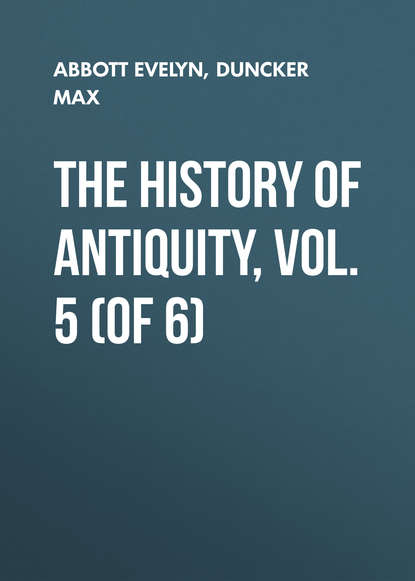По всем вопросам обращайтесь на: info@litportal.ru
(©) 2003-2024.
✖
The History of Antiquity, Vol. 5 (of 6)
Настройки чтения
Размер шрифта
Высота строк
Поля
430
"Vend." 14, 32-40.
431
Arrian, "Anab." 4, 1, 5.
432
"Vend." 13, 143-145.
433
"Vend." 4, 4-53 according to Harlez.
434
"Vend." 4, 54-113. Even after all that has been advanced by De Harlez, "Avesta," p. 101, I cannot convince myself that the stripes appointed here and elsewhere in the Vendidad are to fall, not on the guilty, but on animals of Angromainyu. If animals are to be killed, we are told so expressly in the Vendidad, and this duty is often mentioned along with the stripes (p. 209). To kill twice 90 or 200 flies or lizards is no equivalent for murdering a man. I allow that no one could endure blows by thousands, if they were given in earnest, yet in running a "muck" five and six hundred very severe blows have been endured. In my opinion the punishments of the Avesta are not intended for legal penalties; they mark what was needed, in the opinion of the priests, to expel the evil disposition, which could recur again and again.
435
"Vend." 4, 120; "Astad Yasht," 1; Justi, "Handbuch," sub. voc.
436
Flügel, "Mani," s. 407; Mohl, "Livre des Rois," Intro. Mordtmann, "Z. D. M. G." 19, 485 ff; Nöldeke, "Tabari," s. xv.
437
Nohodares in Ammian, 1, 14, 3; 1, 25, 3.
438
Spiegel, "Eran," 1, 557.
439
"Zamyad Yasht," 56 ff. Above, p. 37.
440
Ritter, "Erdkunde," 8, 153, 183, 491, 561.
441
Chanikof, in Spiegel, "Eran," 1, 556.
442
"Farvardin Yasht," 147.
443
"Vend." 1, 42; Behist. 2, 92.
444
Plin. "H. N." 6, 18, (48).
445
Alexander came from Hyrcania and Parthia to the land of the Tapurians. According to Arrian's statements, the Hyrcanians, Parthians and Tapurians were all under one leader in the army of Darius III. "Anab." 3, 8, 4; 3, 11, 4; Strabo, p. 507, 508, 514, 524; Justin, 12, 3; 41, 5.
446
Herod. 1, 110.
447
Polyb. 5, 44; 10, 27. Cf. Curt. 3, 2 ff.
448
Strabo, p. 523-525.
449
In the most recent times it has been maintained that the Medes were of Turkish-Tatar (Altaic) family, but this view rests simply on the assumption that the inscriptions of the second class in the inscriptions of the Achæmenids must have been written in the language of the Medes. This hypothesis contradicts everything that has come down to us of Median names and works, and the close relationship between the Medes and Persians. Whether the Arians, on immigrating into Media, found there Turkish-Tatar tribes, overpowered, expelled or subjugated them, is another question. If this were the case, the fragments of the population could hardly have exercised any influence worth mentioning on the Arian Medes.
450
Paraetacene is derived no doubt from parvata, mountain, or parvataka, mountainous. Strabo remarks that when the Persians had conquered the Medes, they took some land from them. The distance between Persepolis and Ecbatana was twenty marches; Alexander reached the borders of Media on the twelfth day after leaving Persepolis. Arrian, "Anab." 3, 19.
451
Strabo, p. 73; 509.
452
Under the Sassanids Media (Mah) consisted of four regions: Aderbeijan, Rai (Rhagiana), Hamadan (Ecbatana), Isfahan.
453
Herodotus allows the Matieni a considerable extent, for he includes under the name the Armenians and the inhabitants of Atropatene. Later authors confine the Matieni to the region round the lake of Urumiah; in this sense, Polybius, quoted above in the text, limits Media in the North by the Cadusians and Matieni.
454
Herod. 3, 106; 7, 40.










